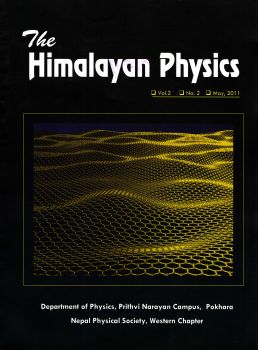Study of InN surface by high resolution electron energy loss spectroscopy (HREELS )
DOI:
https://doi.org/10.3126/hj.v2i2.5208Keywords:
HREELS, Indium nitride, NH2Abstract
Understanding the surface structure and termination of semiconductor thin films during epitaxial growth is critical since it affects the structural, interfacial and electronic properties of epilayers and device structures. The structural properties and surface bonding configuration of InN layers grown by high pressure chemical vapor deposition (HPCVD) have been characterized using high resolution electron energy loss spectroscopy (HREELS). The HREELS analysis of these InN layers shows that the surface is predominantly terminated with NH2 species. This is in contrast to previous work on HPCVD-grown InN layers, which showed only NH species on the nitrogen terminated surface. The presence of NH2 related modes of vibration is the indication of the orientation of the surface other than c-plane.
Key words: HREELS; Indium nitride; NH<sub>2</sub>
The Himalayan Physics
Vol.2, No.2, May, 2011
Page: 35-37
Uploaded Date: 1 August, 2011
Downloads
Downloads
Published
How to Cite
Issue
Section
License
This license enables reusers to distribute, remix, adapt, and build upon the material in any medium or format for noncommercial purposes only, and only so long as attribution is given to the creator. If you remix, adapt, or build upon the material, you must license the modified material under identical terms.




